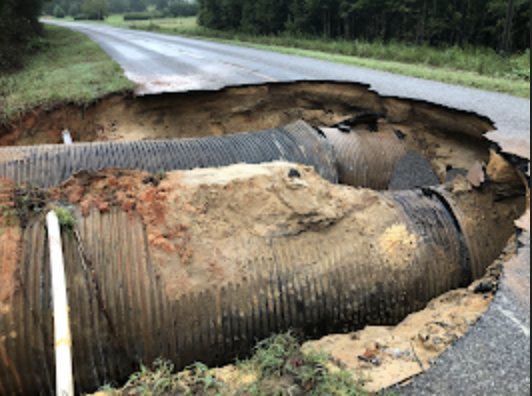Road once traveled by Crockett and Jackson
Published 12:00 am Wednesday, November 29, 2006
What seems like just one more narrow, paved road winding its way through Alabama is in fact a route that made history.
The Federal Road, which runs through Butler County, went about five miles west of Greenville, then by the site of Fort Dale and through Fort Deposit.
For a number of years, a historic marker indicated the road's history in the county, but sadly, the sign, like several others, has disappeared, said Judy Taylor of the Butler County Historical and Genealogical Society.
The road, which dates back to 1812, connected Mobile with Fort Mitchell near Columbus, Ga., roughly following the old trading paths that had long been used by the Native Americans.
It started out as a horse path for mail carriers.
Soldiers began widening the trail in 1811, turning it into a dirt road with tree stumps cut to within six inches of the ground. In some places the soldiers spanned creeks and rivers with logs, while in other spots, travelers forded creeks or took ferries.
The road saw famous visitors like Andrew Jackson and Davy Crockett, Sam Houston and Indian fighter Sam Dale, for whom Fort Dale was named.
The Marquis de Lafayette, a hero of the Revolutionary War, traveled the road escorted by dozens of admirers during his triumphal tour of the South in 1825.
It is said thousands of ordinary settlers also traveled the road, leaving behind fallow land in the Carolinas and Virginia in hopes of claiming fresh, new farmlands in Alabama.
Tragic events took place near the Federal Road as well.
William Ogly's family, who lived a short distance from the road, were attacked in their home by Indians in March 1818. Ogly and four of his children were killed, with two others scalped and left for dead. Mrs. Ogly's life was saved by a fierce dog, allowing her to flee and hide in the thick cane nearby. Some of those who survived were driven insane by their brutal experience.
Somewhere near the Old Federal Road, there is a spot where all the dead were buried together in a wagon body beneath an oak tree.
In that same month and year, Indians ambushed Captain William Butler and several others as they journeyed from Fort Bibb (erected on Pine Flat) to go to Fort Dale, then under construction.
Butler, for whom Butler County was named, was among those killed in the attack.
Not only were many forts built along the old Federal Road, it was also the site of many taverns and way stations, called stands, where travels could eat and sleep (at very high prices).
By the 1830s, the Creek Indians had surrendered all their land east of the Mississippi. That meant many roads, not just the Federal Road, could run through what had been the Creek Nation.
By the late 1840s, steam boats, trains and telegraph lines offered faster alternatives to the old road.
Today, most of the old forts and stands that once flourished along the Federal Road are just memories.


